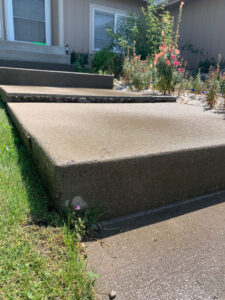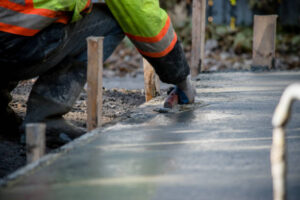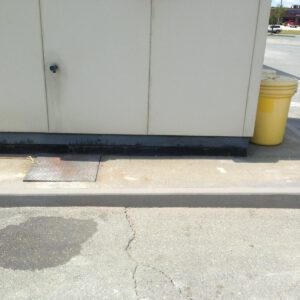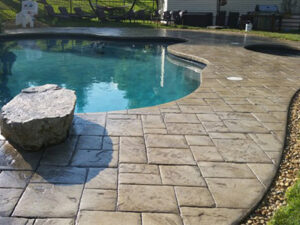Concrete Contractors work on construction projects that require the use of concrete. They perform site prep, forming, placing, and finishing. Site Prep – A concrete crew will clear the area to be worked on by removing rocks, trees, shrubs, and any other debris. Concrete Contractors Dallas TX will also level the ground to promote effective and smooth concrete work.
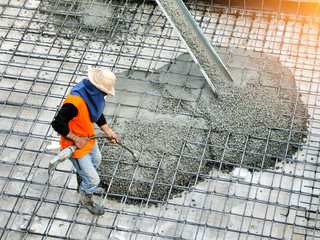
Concrete is a durable, versatile building material widely used for residential and commercial projects. Hiring a reputable concrete contractor can help ensure your project is completed on time and within budget.
Experience is crucial for concrete contractors, as it allows them to do the job right the first time. This saves you money down the road because it eliminates the chance of mistakes and costly repairs.
One of the best ways to find a reliable concrete contractor is to ask questions. This will allow you to judge how experienced a concrete contractor is and whether they will be able to handle your specific needs.
There are a few different licenses and permits you’ll need to start your concrete business. Each one has its own requirements and benefits.
The first step in getting a contractor’s license is to meet state regulations. In most cases, this means being at least 18 years old and having two to four years of experience.
Another requirement is that you pass a written exam and prove your financial stability. Most states also require a bond, which is money that goes to the government in case you can’t pay for work you did.
Many licensing authorities require surety bonds as a way to protect both you and your customers. Becoming bonded can make you more attractive to project owners and expand your business. Fortunately, it’s not difficult to secure these bonds.
Concrete is a highly specialized material that requires a specific set of skills. Construction contractors are required to understand how concrete works from its initial mix to the finished surface we all walk on every day.
They also need to be able to take direction from the site’s foreman. Since concrete work is time-sensitive, they must remain focused throughout their shifts if they want to meet deadlines.
In order to be successful in the concrete industry, contractors need a bachelor’s degree in a technical field or a related subject. They also need to gain experience in the field through on-the-job training or an apprenticeship.
Before you hire a concrete contractor, you need to make sure that they have a good reputation in the industry. There are several ways to determine a company’s reputation, including customer testimonials and online reviews.
Experience is another essential factor to consider when hiring a commercial or residential concrete contractor. Having years of experience is crucial for a contractor to know how to handle different situations and to deliver quality work.
Check out a concrete contractor’s website and read customer reviews on sites like Yelp. These reviews can provide you with information about the contractor’s past work, customer service, and overall quality.
Concrete is a strong and durable material that can be used for a wide variety of purposes. The cost of concrete projects will vary based on the type and size of the project.
Using more concrete than you need can increase the price of your project, since more concrete means you will need more labor and equipment to pour. In addition, you may need to regrade your land before pouring the concrete, which can add another layer of cost.
Whether you need a concrete pad for your air conditioner or a new concrete floor for your office building, you can rely on commercial concrete contractors to handle the job. They will use the best concrete materials for your particular project and apply their extensive expertise to ensure your building is built to last.
Concrete contractors are professionals who specialize in the installation, repair, and maintenance of concrete structures. They work on a variety of projects, including the construction of buildings, bridges, roads, and other infrastructure. Concrete contractors may also work on smaller projects such as driveways, patios, and retaining walls for residential or commercial properties.
Concrete contractors are skilled in working with concrete, a mixture of cement, water, and aggregates (such as sand and gravel) that hardens over time to form a strong and durable material. They are familiar with different types of concrete and their uses, as well as the tools and equipment needed to work with concrete, such as mixers, trowels, and saws.
